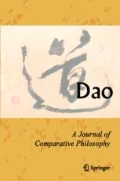References
Aitken, Robert, trans. 1997.The Gateless Barrier. The Wu-men Kuan. New York: North Point Press.
Barthes, Roland. 1970/1982.The Empire of Signs. Trans. Richard Howard. New York: Hill and Wang.
Blue Cliff Record. Taishō shinshū daizōkyō. 48.2003. 139a–292a.
Buswell, Robert E. Jr. 1983.The Korean Approach to Zen: Collected Works of Chinul. Honolulu: University of Hawaii Press.
—. 1986. “Chinul’s Systematization of Chinese Meditative Techniques in Korean Son Buddhism.” In Gregory 1986: 199–242.
—. 1987. “The “Short-cut’ Approach of K’an-hua Meditation: The Evolution of a Practical Subitism in Chinese Zen Buddhism.” In Gregory 1987: 321–377.
Chinul.Treatise on Resolving DoubtsAbout Kanhua Meditation. InComplete Works of Korean Buddhism 4. 732c–737c.
Clearly, Thomas. 1983/1994.Entry Into the Inconceivable: An Introduction to Hua-yen Buddhism. Honolulu: University of Hawaii Press.
-, trans. 1997.Unlocking the Zen Koan: A New Translation of the Zen Classic Wumenguan. Berkeley: North Adantic Books.
Clearly, Thomas and J. C. Clearly, trans. 1992.The Blue Cliff Record. Boston: Shambhala.
Cook, Francis. 1991. “Fa-tsang’s Treatise on the Five-Doctrines: An Annotated Translation.” Ph. D. dissertation. University of Wisconsin.
DahuiDahui yulu.Taishō 47. 1998. 811b-943a.
Diamond Sūtra. Taishō 8.235.748c–752c.
Dumoulin, Heinrich. 1992.Zen Buddhism in the 20th Century (1990). Trans. Joseph S. O’Leary. New York: Weatherhill.
Dushan.Cessation and Contemplation in the Five Teachings of the Huayen.Taisho 45. 1867. 509a-513c.
Faure, Bernard. 1993.Chan Insights and Oversights: An Epistemological Critique of the Chan Tradition. Princeton: Princeton University Press.
—. 1991.The Rhetoric of Immediacy: A Cultural Critique of Chan /Zen Buddhism. Princeton: Princeton University Press.
Fazang.Treatise on the Five Teachings.Taishō 45. 1866. 477a-509a.
Foulk, Griffith T. 1995. “Myth, Ritual, and Monastic Practice in Sung Ch’an Buddhism.” In Patricia Buckley Ebrey and Peter N. Gregory, eds.,Religion and Society in T’ang and Sung China. Honolulu: University of Hawaii Press.
Gateless Gates. Taisho 48.2005. 292a–299c.
Gregory, Peter N. 1986.Traditions of Meditation in Chinese Buddhism. Honolulu: University of Hawaii Press.
—. 1991.Tsung-mi and the Sinification of Buddhism. Princeton: Princeton University Press.
—, ed. 1987.Sudden and Gradual: Approaches to Enlightenment in Chinese Thought. Studies in East Asian Buddhism 5. Honolulu: University of Hawaii Press.
Gregory, Peter N. and Daniel A. Getz, Jr., eds. 1999.Buddhism in the Sung. Honolulu: University of Hawaii Press.
Heine, Steven and Dale S. Wright, eds.. 2000.The Kōan: Texts and Contexts in Zen Buddhism. New York: Oxford University Press.
Hsieh, Ding-hwa Evelyn. 1993. “A Study of the Evolution of K’an-hua Ch’an in Sung China: Yüan-wu K’o-ch’in (1063–1135) and the Function of Kung-an in Ch’an Pedagogy and Praxis.” Ph.D. dissertation. Univ. of California at Los Angeles.
—. 1994. “Yuan-wu K’o-ch’in’s (1063–1135) Teaching of Zen Kung-an Practice: A Transition from the Literary Study of Ch’an Kung-an to the Practical K’an-hua Ch’an.”Journal of the International Association of Buddhist Studies 17.1 (Summer): 66–95.
Huong. 1579.The Mirror of Zen Teaching. InComplete Works of Korean Buddhism 7. 634c-646c.
Koestler, Arthur. 1961.The Lotus and the Robot. New York: MacMillan.
Levering, Miriam L. 1978. “Zen Enlightenment for Laymen: Ta-hui and the New Religious Culture of the Sung.” Ph. D. dissertation. Harvard University.
Lie, Ming-Wood. 1981. “TheP’an-chiao System of the Hua-yen School in Chinese Buddhism.”T’oung Pao 67. 1–2: 10–47.
McPhail, Mark Lawrence. 1996.Zen in the Art of Rhetoric: An Inquiry into Coherence. Albany: SUNY Press.
Miura, Isshū, and Ruther Fuller Sasaki. 1965.The Zen Koan: Its History and Uses in Rinzai Zen. New York: Harcourt Brace and Javanovich.
Mu Soeng, Sunim. 1991.Thousand Peaks: Korean Zen —Tradition & Teachers. Cumberland: Primary Point Press.
Olson, Carl. 2000.Zen and the Art of Postmodern Philosophy: Two Paths of Liberation from the Representational Mode of Thinking. Albany. SUNY Press.
Park, Jin Young. 1998. “Deconstructive Framing: Son Buddhism and Postmodern Thought.” Ph.D. Dissertation. State University of New York at Stony Brook.
Park, Sung Bae. 1983.Buddhist Faith and Sudden Enlightenment. Albany: SUNY Press.
Pine, Red, trans. 1987.The Zen Teaching of Bodhidharma. New York: North Point Press.
Pomhu Chamyong. 1986.Study on Pojo Chinul’s Kanhwa Son. Seoul: Sonhak yon’ guwon.
Sekida, Katsuki, trans. 1977.Two Zen Classics: Mumonkan and Hekiganroku. New York: Weatherhill, Inc.
Shim, Jae Ryong. 1979. “The Philosophical Foundation of Korean Zen Buddhism: The Integration of Son and Kyo by Chinul (1158–1210).” Ph. D. Dissertation. Honolulu: University of Hawaii.
Song, Sokku. 1979. “Essay on Pojo’sTreatise on Resolving Doubts about Hwadu meditation.”Tongguk sasang 12:21–34.
Wonyung. 1993.Kanhua Son: The Correct Understanding of the Sudden Teaching of Son Buddhism Hapch’on, Korea: Jangkyonggak.
Wright, Dale S. 1992. “Rethinking Transcendence: The Role of Language in Zen Experience,”Philosophy East and West 421: 113–38.
-. 2000. “Kōan History: Transformative Language in Chinese Buddhist Thought.” In Steve Heine and Dale S. Wright, eds.The Kōan: Texts and Contexts in Zen Buddhism: 200–212.
Yü, Chün-fang. 1979. “Ta-hui Tsung-kao and Kung-anZen”Journal of Chinese Philosophy 6: 211–235.
Author information
Authors and Affiliations
Rights and permissions
About this article
Cite this article
Park, J.Y. Zen and zen philosophy of language: A soteriological approach. Dao 1, 209–228 (2002). https://doi.org/10.1007/BF02857096
Issue Date:
DOI: https://doi.org/10.1007/BF02857096

